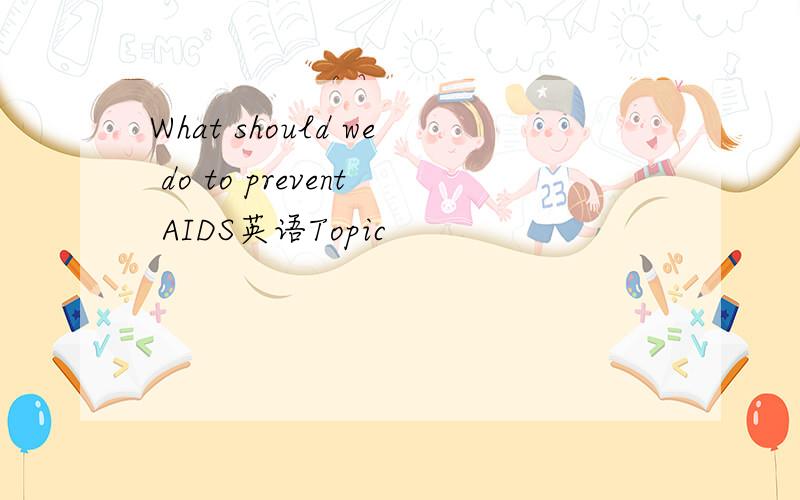What should we do to prevent AIDS英语Topic
来源:学生作业帮助网 编辑:作业帮 时间:2024/04/29 16:25:27

What should we do to prevent AIDS英语Topic
What should we do to prevent AIDS
英语Topic
What should we do to prevent AIDS英语Topic
6 Promising Routes to HIV Prevention
The report,released here at the XVI International AIDS Conference,surveyed the state of research on six promising approaches for the prevention of HIV:male circumcision; cervical barriers such as diaphragms; HIV "prevention pills"; suppression of herpesherpes,which raises the risk of contracting HIV threefold; topical microbicides; and HIV vaccines.
1.Male Circumcision
A trial of over 3,000 young men showed that those who are circumcised are about 60% less likely to be infected with HIV,compared with those who are not circumcised,says Gita Ramjee,PhD,of the HIV Prevention Research Unit of the South Africa Medical Research Unit.
And another study predicted that widespread implementation of male circumcision could avert 2 million new infections in sub-Saharan Africa alone.
But circumcisions must be safely performed by trained health providers -- something that is lacking in many developing countries,the report notes.
2.Microbicides
Gels and creams applied to the vagina or rectum to reduce HIV transmission,microbicides are a hot area of research,Ramjee says.
They can combat HIV on a variety of fronts:disabling the virus,interfering with the process by which the virus enters and takes hold in cells,and even strengthening the body's defenses against infection.
As of mid-2006,there were over 25 products in various stages of development,with five in late-stage studies of effectiveness.Results could be available by late 2007,Ramjee says.
3.Diaphragms and Other Cervical Barriers
"Diaphragms physically block the virus from reaching the cervix,where there is good reason to believe most infections occur," says Nancy Padion,PhD,professor of obstetrics and gynecology at the University of California,San Francisco.
Results of a trial of over 5,000 women comparing use of the diaphragm plus condoms with condoms alone are expected in 2007.
Future research will look at using the diaphragm in conjunction with a microbicide for dual protection,Ramjee says.
4.HIV 'Prevention Pills'
Testing of an AIDS "prevention pill" on about 860 high-risk women in Cameroon,Ghana,and Nigeria suggest that the approach is safe and feasible,according to research presented at the conference.
While the numbers were too small to prove effectiveness,the research is encouraging enough to "suggest it is good for HIV prevention," Ramjee says."Now we need further study to figure out how it should be given."
5.HerpesHerpes Treatment
Genital herpesGenital herpes increases the risk of HIV infection threefold,and herpes can be treated with drugs."The hope is that by decreasing herpes infections,we can reduce the risk of HIV transmissions," Ramjee says.
Two clinical trials evaluating the strategy are underway.
6.HIV Vaccines
There is renewed hope for a vaccine,thanks to 16 grants totaling $287 million from the Bill and Melinda Gates Foundation.
But a vaccine,widely considered to be the best way to control the epidemic,is probably still years away.
"We are fully confident we have a vaccine,but we've stopped predicting when:It could be five years,10 years,or more," Gayle says.
Beyond the ABCs of HIV Prevention
The bottom line "is that we have to go beyond the ABCs of prevention," Ramjee says,referring to the widely used acronym for abstinence,being faithful to one sexual partner,and using condoms.
"I have described a new acronym that goes right up to I," she says.
"We have an additional C for circumcisioncircumcision,D for diaphragm for HIV prevention,E for exposure prophylaxis -- both pre and post,F for female-controlled microbicides,G for genital tract infection,H for HSV-2 (herpes) suppressive therapy,and I for immunization through vaccine."
我们该怎样做来预防爱滋病?